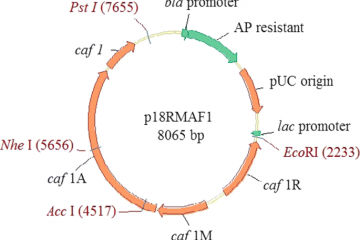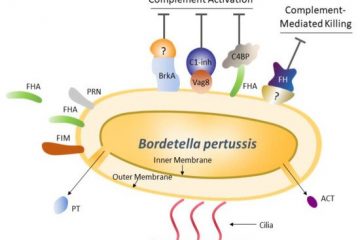PRODUCT SPECIFICATIONS
DESCRIPTION: Stain kit to quantify total collagen
FORMAT: Glass slides and tissue culture plates
ASSAY TYPE: Dye staining
ASSAY TIME: Varies depending on sample type
STANDARD RANGE: Collagen: 3 μg/section
Non-collagenous proteins: 50 μg/section
NUMBER OF SAMPLES: 30-50 samples/kit
SAMPLE TYPES: Cultured cells and tissue sections
RECOMMENDED SAMPLE DILUTIONS: N/A
CHROMOGEN: N/A (read at 540 and 605 nm)
STORAGE: Room temperature for 12 months
INTRODUCTION
Sirius Red and Fast Green is a dye combination used to distinguish collagen from its surrounding materials. Sirius Red specifically binds the [Gly-X-Y]n helical structure of fibrillar collagens, regardless of collagen type or species, whereas Fast Green binds to non-collagenous proteins. By exploiting the unique features of these two dyes, Chondrex, Inc. provides a simple semi-quantitative assay kit to determine the amounts of collagen and non-collagenous proteins in cultured cell layers and tissue sections (1-2). Because this assay does not require
collagen solubilization, can be used to measure total collagen content in various tissues (3-7).
As Sirius Red and Fast Green have absorptions at 540 nm and 605 nm respectively, the OD values of the extracted dyes can be used to calculate the collagen and non-collagenous protein content of samples. For general histological studies in which tissue sections are 10-20 μm thick, the assay sensitivity for collagen and non-collagenous proteins is greater than 3 μg/section and 50 μg/section, respectively. This kit contains enough reagents to stain 30-50 samples.

Chondrex Sirius Red Fast Green Collagen
Sirius Red/Fast Green Collagen Staining
The semi-quantitative total tissue collagen detection kit (Sirius Red/Fast Green collagen staining kit: catalog # 9046) provides a simple quantitative micro-assay tool for determining the total amount of collagen and non-collagenous proteins in cultured cell layers and tissue sections by differential staining with two dyes, sirius red and fast green. Sirius Red binds to all types of collagen, whereas fast green stains non-collagenous proteins. This method has been applied to the measurement of collagen contents in various tissues.
Type I Collagen Detection Kits
Type I collagen is a fibrilar collagen consisting of two identical alpha1(I) chains and one alpha2(I) chain. It is the most abundant collagen type and is found in most connective tissues such as skin, bone, tendon, ligament, and heart. Many tissues with the exception of bone, which consists of type I collagen, contain heterotypic fibrils with two or more distinct collagen types in coexistence. In general, type I collagen is dominant and type III collagen is a minor component. Chondrex provides 5 types of type I collagen assay kit for determining bovine, human, mouse, porcine and rat type I collagen.
Type II Collagen Detection Kit
Type II collagen is unique among the collagen family, and its tissue distribution is limited to avascular tissues such as cartilage and the vitreous body of the eyes. Since type II collagen can induce arthritis in experimental animals, autoimmunity to type II collagen is suspected in the pathogenesis of certain autoimmune diseases in humans such as rheumatoid arthritis, eye diseases associated with rheumatoid arthritis, and relapsing polychondritis, which affects specific tissues containing type II collagen. The Type II Collagen Detection Kit (catalog # 6018) is designed to quantify the amount of native type II collagen from various species (such as human, monkey, porcine, bovine, rat, mouse, rabbit, equine, and chick) in cultured tissues or tissue specimens by ELISA.
Semi-Quantitative Total Tissue Collagen Detection Kit (Sirius Red/Fast Green Collagen Staining Kit)
The semi-quantitative total tissue collagen detection kit (Sirius Red/Fast Green collagen staining kit: catalog # 9046) provides a simple quantitative micro-assay tool for determining the total amount of collagen and non-collagenous proteins in cultured cell layers and tissue sections by differential staining with two dyes, sirius red and fast green. Sirius Red binds to all types of collagen, whereas fast green stains non-collagenous proteins. This method has been applied to the measurement of collagen contents in various tissues.
These dyes can be easily extracted from stained tissues, and the amounts (micrograms) of collagen and non-collagenous proteins in each section can be calculated based on OD 540 (sirius red) and OD 605 (fast green). The assay sensitivity is more than sufficient to determine collagen and non-collagenous proteins in 10-20 micrometer tissue sections prepared for general histological studies. The assay sensitivity for collagen is more than 3 micrograms/section, and non-collagenous protein is more than 50 microgram per section.
[Linking template=”default” type=”products” search=”sirius red fast green collagen” header=”1″ limit=”28″ start=”2″ showCatalogNumber=”true” showSize=”true” showSupplier=”true” showPrice=”true” showDescription=”true” showAdditionalInformation=”true” showImage=”true” showSchemaMarkup=”true” imageWidth=”” imageHeight=””]


